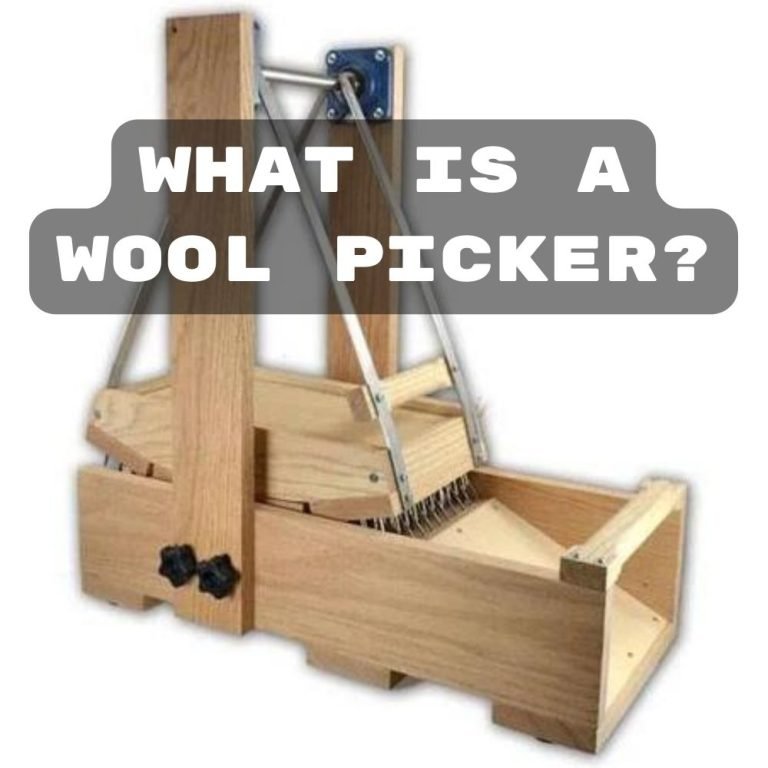A GUIDE TO FELTING NEEDLES: Everything You Need to Know
Felting needles are the heart of the needle felting craft, a technique that transforms wool into intricate, solid sculptures through a process of stabbing and matting the fibers. Whether you are a seasoned felter or a curious beginner, understanding the nuances of felting needles is crucial. This guide will navigate through the various types, gauges, and handling of felting needles, offering insights for both novice and experienced felters.
Understanding Different Types of Felting Needles
Felting needles come in diverse shapes and sizes, each designed for specific aspects of felting. The most common types include triangular, star, spiral (or twisted), and reverse felting needles.
Triangular Needles
- Structure: Three edges, straight shaft, regularly spaced barbs.
- Use: Versatile for general felting, with specific sub-types like Crown needles for surface details.
Star Needles
- Structure: Four edges, straight shaft, barbs on all corners.
- Use: Efficient for quick, firm felting, suitable for courser wools and joining pieces.
Spiral (Twisted) Needles
- Structure: Similar cross-section to triangular needles but with a twisted blade.
- Use: Fast felting with a neat finish, less suited for bulk sculpting work.
Reverse Felting Needles
- Structure: Triangular in shape but with reverse barbs.
- Use: Pulls fibers out instead of pushing in, ideal for creating a fluffy finish or simulating fur.

Deciphering Needle Gauges
The gauge of a felting needle refers to its diameter – the higher the number, the finer the needle. This affects the size of the barbs and, consequently, the felting process.
- 32 to 36 Gauge: Suitable for coarse fibers, robust felting.
- 38 Gauge: A versatile choice for various wool types.
- 40 and 42 Gauge: Ideal for fine detail work and finishing touches.
The Role of Barbs in Felting
Barbs on a felting needle are essential for interlocking wool fibers. The number of barbs impacts the felting speed and precision.
- Higher Barb Count: Faster felting, suitable for bulk work.
- Lower Barb Count: Greater accuracy, preferred for detailed work.
Handling and Care of Felting Needles
Felting needles are delicate and require careful handling to avoid breakage. Always use a straight in-and-out motion and avoid bending or twisting the needle. If resistance is met, switch to a finer gauge instead of forcing the needle through the wool.
Personalizing Your Felting Needles with DIY Handles
For those who prefer a personalized touch, crafting your own needle handles from polymer clay or similar materials can be a satisfying project. This not only adds a personal flair but can enhance the felting experience through improved grip and comfort.
Selecting the Right Needle for Your Project
When starting a felting project, consider the type of wool and the desired outcome. A 36G star needle can kickstart your project, while a 42G triangular needle is excellent for adding fine details.
In conclusion, mastering the art of felting needles is a journey of understanding their types, gauges, and proper handling. Embrace this knowledge to elevate your needle felting projects, and explore the versatility and creativity that felting offers.
In the next section, we will delve deeper into the practical aspects of felting needles, including how to choose the right needle for specific projects and creative ways to use different needle types. Stay tuned for more insightful tips and techniques.
Practical Insights for Felting Needle Use
Beyond understanding the various types and characteristics of felting needles, it’s equally important to know how to apply this knowledge practically in your needle felting projects. Here, we offer essential tips and creative uses for different needle types, ensuring your felting journey is both enjoyable and successful.
Tips for Choosing the Right Felting Needle
- Assess Your Wool Type: Coarser wools require thicker needles (lower gauge), while finer wools work better with thinner needles (higher gauge).
- Consider the Project Scale: For larger projects, start with a needle that has more barbs to quickly shape the bulk. Switch to a needle with fewer barbs for detailed work.
- Balance Speed and Precision: Needles with more barbs felt faster but offer less precision. Use them for initial stages or larger areas.
- Experiment with Different Types: Each needle type offers unique benefits. Triangular needles are great all-rounders, star needles for quick felting, spiral needles for a neat finish, and reverse needles for special effects like fur.
Creative Uses of Different Needle Types
- Triangular Needles: Ideal for sculpting shapes and adding fine details on felted characters or decorative items.
- Star Needles: Efficient for quickly felting large pieces like felting mats or woolen landscapes.
- Spiral Needles: Perfect for achieving a smooth, refined surface on sculptures or felted jewelry.
- Reverse Needles: Create unique textures like animal fur or fluffy clouds in woolen artworks.
Maintaining and Storing Felting Needles
- Avoiding Breakage: Always use a straight in-and-out motion. If the needle doesn’t penetrate easily, switch to a different gauge.
- Storing Safely: Keep needles in a dedicated case or holder to prevent accidents and maintain their sharpness.
- Regular Checks: Inspect needles for bluntness or bends regularly and replace when necessary.
Expanding Your Felting Toolkit
While mastering felting needles is crucial, complementing them with the right accessories can significantly enhance your felting experience.
- Needle Holders: Consider using needle holders or pens for better grip and control, especially for detailed work or if you experience hand fatigue.
- Color Coding: Color-coding your needles by gauge or type can save time and help maintain organization in your crafting space.
- DIY Handles: Personalize your needles with DIY handles for comfort and a unique touch to your felting tools.
In summary, felting needles are more than just tools; they are the bridge between your creativity and the beautiful woolen creations you produce. By understanding their types, gauges, and proper usage, and by complementing them with the right accessories, you can take your needle felting projects to new heights of precision and beauty.
Advanced Techniques and Care Tips for Needle Felting
Taking your needle felting skills to the next level involves not only mastering the basic techniques but also exploring advanced strategies and ensuring the longevity of your tools.
Advanced Felting Techniques
- Layering Colors: Use reverse needles to pull underlying colors through the top layer for a multi-dimensional effect.
- Creating Textures: Employ different needles to create varied textures. For example, use a star needle for a rougher texture and a fine gauge needle for smoother finishes.
- Incorporating Mixed Media: Integrate beads, buttons, or fabric pieces into your felted projects using specific needles to attach these elements securely.
Caring for Your Felting Needles
- Regular Cleaning: Wipe needles regularly to remove wool residue and maintain their efficiency.
- Avoid Moisture: Store needles in a dry place to prevent rusting, especially if they are made of high-carbon steel.
- Using Needle Guards: Protect the tips of your needles with guards when not in use to prevent them from getting dull or causing injury.
Expanding Your Felting Horizons
As you grow more confident in your needle felting abilities, consider exploring various types of wool and their unique properties. Each type of wool brings its texture, firmness, and felting ease, providing a diverse range of possibilities for your projects.
- Merino Wool: Known for its softness and fineness, perfect for detailed work.
- Coarse Wools: Ideal for creating sturdy, structural pieces.
- Specialty Fibers: Experiment with fibers like angora, alpaca, or cashmere for unique textures and finishes.
Joining the Felting Community
Engaging with fellow felters can provide invaluable tips, inspiration, and a sense of community. Consider joining online forums, local workshops, or felting groups to share experiences, learn new techniques, and showcase your creations.
Continuing Education in Felting
- Workshops and Classes: Look for local or online workshops to learn from experienced instructors.
- Online Resources: Utilize tutorials, blogs, and videos for new ideas and techniques.
- Books and Magazines: Stay updated with the latest trends and patterns in the felting world.
In conclusion, the journey into needle felting is an exciting and rewarding one. With the right knowledge of felting needles, care, and advanced techniques, coupled with a passion for exploring different wool types and engaging with the felting community, you can create truly stunning and unique felted artworks.
Embracing the Art of Needle Felting
As we conclude this comprehensive guide to felting needles, it’s clear that the art of needle felting offers a world of creative possibilities. From choosing the right needle for your project to exploring advanced techniques and caring for your tools, each step in this journey adds depth and enjoyment to your felting experience.
Final Thoughts on Needle Felting
Needle felting is not just a craft; it’s a form of expression that combines skill, creativity, and patience. Whether you’re crafting a small, intricate piece or a large, sculptural work, the satisfaction of seeing your vision come to life through wool and needle is incomparable.
Encouraging Continued Learning and Exploration
We encourage you to keep experimenting and learning. Needle felting is an evolving art, and there’s always something new to discover. Whether it’s a new type of wool, a different needle, or a unique technique, the potential for innovation and creativity is endless.
Joining the Global Felting Community
Remember, you’re part of a global community of felters. Share your work, learn from others, and be inspired by the incredible diversity of needle felting art around the world. Your next felting project could be the one that inspires someone else to start their felting journey.
Keep Felting and Creating
In closing, we hope this guide has provided valuable insights into the world of needle felting. Keep felting, keep creating, and most importantly, enjoy every moment of your creative journey.




